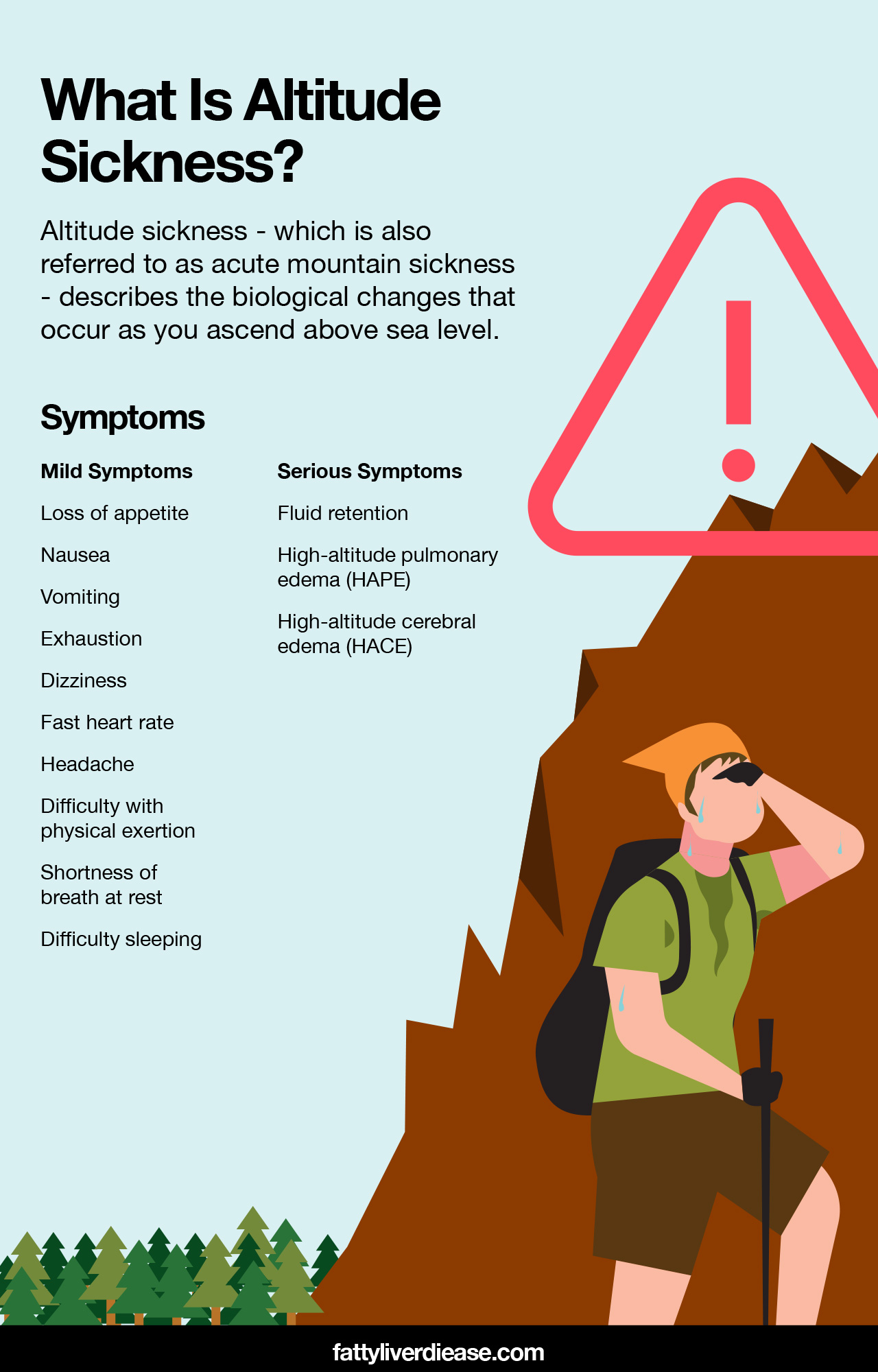

blue tinge to the skin or lips (cyanosis).High altitude pulmonary oedema (HAPE) is a build-up of fluid in the lungs. You should go to hospital as soon as possible for follow-up treatment. If you cannot go down immediately, dexamethasone can help relieve symptoms until it's safe to do so.
#SYMPTOMS OF ALTITUDE SICKNESS PROFESSIONAL#
It's often carried by professional mountain climbers as part of their medical supplies.


do not go any higher for at least 24 to 48 hours.If you get symptoms of altitude sickness while taking acetazolamide, rest or go down until you feel better before going up again. You should still go up gradually and follow the prevention advice, including taking time to acclimatise, having regular rest days and drinking plenty of water. You do not need a prescription to buy it.īegin taking acetazolamide 1 to 2 days before you start to go up in altitude and continue to take it while going up. Promethazine is available from pharmacies. But it's available from most travel clinics and some GPs may prescribe it. In the UK, acetazolamide is not licensed to treat altitude sickness. anti-sickness medicine, such as promethazine, for nausea.ibuprofen and paracetamol for headaches.acetazolamide to prevent and treat high-altitude sickness.avoid strenuous exercise for the first 24 hoursĬonsider travelling with these medicines for altitude sickness:.have a rest day every 600m to 900m you go up, or rest every 3 to 4 days.avoid climbing more than 300m to 500m a day.take 2 to 3 days to get used to high altitudes before going above 2,500m.avoid flying directly to areas of high altitude, if possible.It usually takes a few days for your body to get used to a change in altitude. The best way to prevent getting altitude sickness is to travel to altitudes above 2,500m slowly. It's not possible to get altitude sickness in the UK because the highest mountain, Ben Nevis in Scotland, is only 1,345m. Tourists travelling to cities that are 2,500m above sea level or higher, such as La Paz in Bolivia or Bogotá in Colombia, can also get altitude sickness. Symptoms are similar to those of a bad hangover and include:Īltitude sickness does not only affect mountain climbers. Symptoms of altitude sickness usually develop between 6 and 24 hours after reaching altitudes more than 2,500m above sea level.

Your age, sex or physical fitness do not affect your likelihood of getting altitude sickness.Īlso, just because you may not have had it before, this does not mean you will not get it on another trip. You can get altitude sickness if you travel to a high altitude too quickly.īreathing becomes difficult because you're not able to take in as much oxygen.Īltitude sickness, also called acute mountain sickness (AMS), can become a medical emergency if ignored.


 0 kommentar(er)
0 kommentar(er)
